The reasons why your broiler chickens are dying can be attributed to so many conditions such as nutrition, sudden death syndrome (SDS), heat stress, stocking density, metabolic disorder, etc. But broiler chicken dying suddenly without any symptoms of ill health, from experience and research, is mainly caused by two conditions known as Sudden Death Syndrome (SDS), and Heat stress
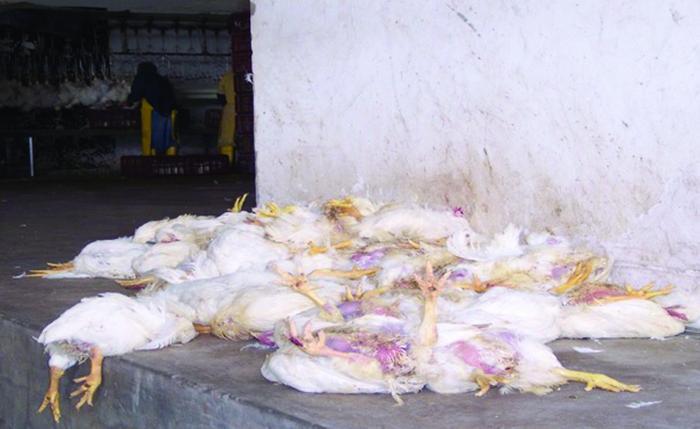
SDS and Heat stress are the major causes of sudden death in broilers
These conditions within a short time result in more serious health problems leading to sudden death.
Therefore, to prevent sudden death on your broiler farm, you must learn how to avoid these conditions and manage them.
So, in this post, I am going to share with you the two major conditions causing your broiler chickens to die suddenly or frequently and how you could prevent and manage them. These conditions include
- Heat stress
- Sudden death syndrome (SDS)
Also read: How To Star a Profitable Layer Poultry Farming In Nigeria
1.Heat stress and Mortality in Broiler
Heat stress is one of the most important environmental stressors challenging broiler production worldwide
Birds, especially broilers are subject to heat stress when the air temperature and humidity uncontrollably increase their core body temperature. Heat stress can result in panting, increased water intake, and eventually death. Access to cool. Freshwater, ventilation, and adjusted feed schedules can help provide relief to birds
Signs of heat stress
As atmospheric temperature increases to 30 oC, the bird will try to lose heat through evaporative cooling, panting. Panting creates more heat through muscle activity. \
As a result, the bird will increase its water intake, but not enough to keep up with the losses through respiration and urine excretion. Without relief, the changes will worsen and the bird may die suddenly.
How to Manage heat stress in Broiler Chicken
Provide Ventilation-
You can manage heat in your flock through the airflow. Airflow at the birds’ level is key to removing bird heat.
Naturally-ventilated barns are at risk of heat stress if the air is calm and supplemental fans are not present. Mechanically- ventilated barns can also be at risk if barns lack ventilation capacity and air mixing for the size and number of birds present. It is preferable to roof your pen with aluminum or asbestos materials – caution should be taken while using asbestos because of its health risk.
Feeding-
Feed your birds in the morning, and withdraw the feeder six hours before the temperature gets hotter in the afternoon. You can reintroduce the feed after the hot temperature has started to decline. I normally divide the daily feed ratio into a 3:2 ratio, 60% in the morning and 40% in the evening when the weather is much cooler.
Managing water-
their water intake by 2 to 4 times their normal intake. Sufficient water space, operating waterers, and cool water temperature will encourage the birds to drink- you can add ice to your water if it is warm to encourage them to drink.
During heat stress, birds will increase
Using electrolytes-
You can add electrolytes to your flock’s drinking water for three days. Heat stress causes increased loss of several minerals. Provide the electrolytes before the heat stress period.
Supplementing vitamins-
Supplementing drinking water with vitamins (A, D, E, and B complex ) can be effective at tackling heat stress mortality in broilers.
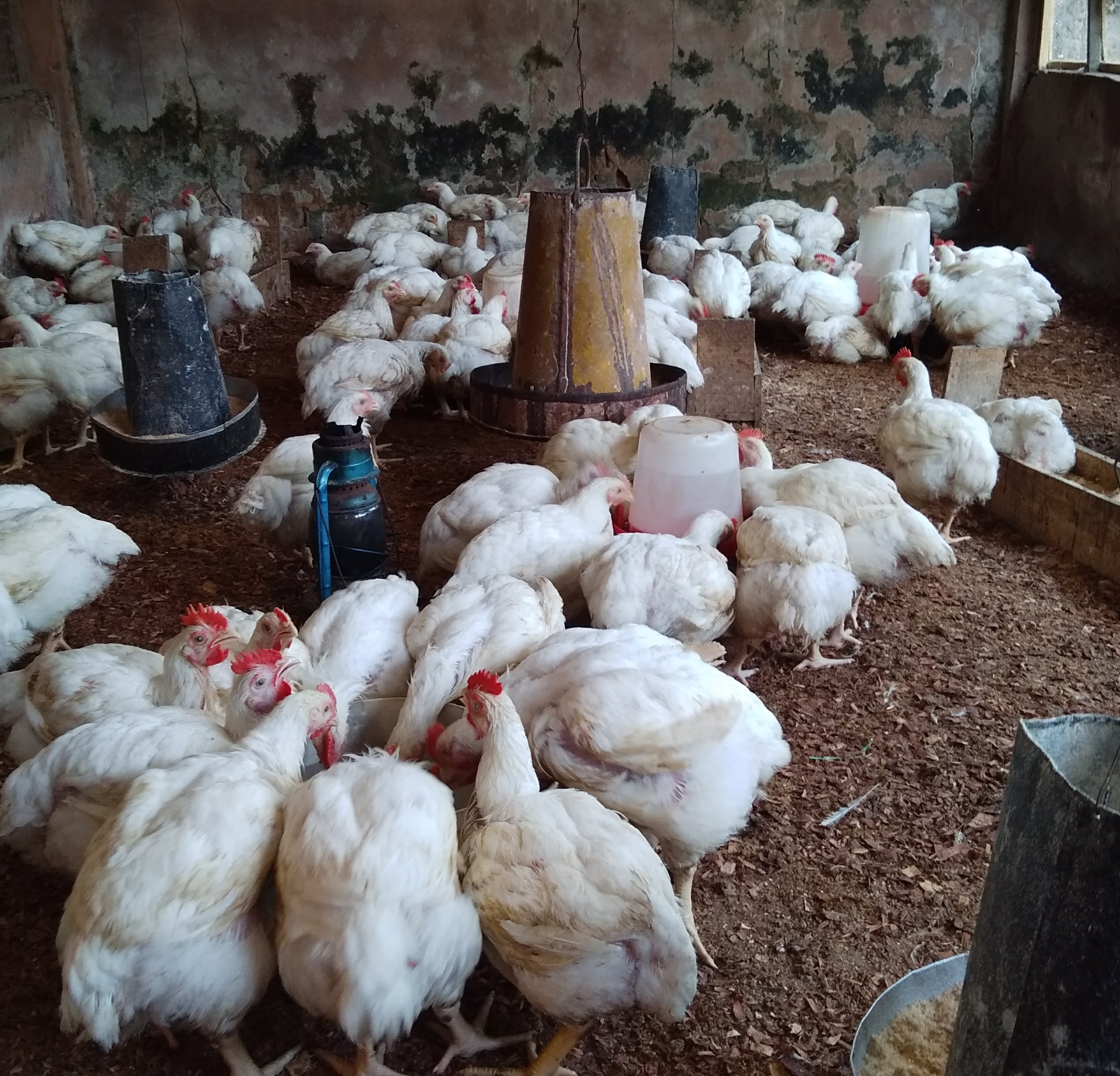
Broilers birds should drink more water and less feed during the hotter part of the day
Also, ensure your stocking density is manageable and not congested to prevent pilling and stampede. This can get worse if there is occasional noise around your pen.
They can get scared and pill up at the corners of the pen which may lead to suffocation. Avoid corners and edges in your pen, it encourages pilling up and stampedes when chickens get scared. I have woken up to a dozen of birds that died from such incidents.
Also read: How to hatch chicks naturally at your backyard farm
2.Sudden Death Syndrome in Broilers
Sudden death syndrome occurs in broiler chickens of all ages and at the onset of sexual maturity in broiler breeders. Affected birds unexpectedly jump in the air, convulse, squawk, flip over and die-this is sometimes called a heart attack. Mortality due to SDS ranges from 0.5% to 9.62% in broiler chickens and from 0.5% to 3.0% in broiler breeders. Feeding strategies and other management strategies can limit SDS incidence and damage.
Dead broiler chickens
Feed Ingredient –
A high number of SDS cases has been recorded in broiler chicks fed with wheat-soybean meal diets than corn-soybeans meal-based diet. The increased amount of biotin provided by corn relative to the amount provided by wheat may have contributed to the decreased mortality found with corn. In your next feed formulation ensure to pick corn over Wheat.
Protein –
A lower incidence of SDS (50%) was recorded in 29 -56 day-old broiler chickens fed with a 24% protein finisher diet, relative to birds fed a 19 % protein finisher diet. The incidence of SDS also appeared to decrease when a meat meal was used in the diet.
Lipids-
It was found that birds fed with unsaturated oil, sun as sunflower oil, had the lowest incidence of SDS and also showed lower mortality from SDS than broilers fed with a saturated fat source, such as tallow. The levels of linoleic and arachidonic acids are higher when sunflower oil is used and decrease when tallow is used as a fat supplement.
Mineral-
Using dieting containing lower level lower levels of calcium, phosphorus, potassium, and magnesium, the incidence of SDS was successfully reduced and the supply of these elements therefore should be taken into account.
Feed restriction-
Feed restriction will reduce mortality due to SDS. A mortality level of 0% has been reported for feed restricted birds compared with 3.3% under ad libitum feeding.
Strategies to decrease growth and metabolic rate to some extent and hence alleviate the incidence of SDC, as well as improve feed conversion in broiler chicken include Skip-a-day feeding, intermittent lighting programs, and feed supplementation.
The skip-a-day feeding works best when used for three weeks starting at 1 day-old. This method can improve carcass quality and reduce SDS which is often associated with birds that are on ad libitum feed intake.
The use of intermittent lighting programs (1 hour light: 3 hours dark from 8 to 49 days) has the advantage of reducing the incidence of SDS compared with the continuous lighting schedule (23 hours light: 1 hour dark), with no reduction of weight at market age.
Another experiment on the relationship between SDS, Bodyweight, and age concluded that death resulted from SDS increases with an increase in body weight at 21 and 27 days of age. This suggested that the broiler should be reared at a slower rate to reduce SDS-related death. This can be achieved through the use of intermittent lighting programs as described earlier.
Also read: How to cure paralysis in broiler chickens for a full recovery
Here are some experts' thought on causes of sudden death in broilers
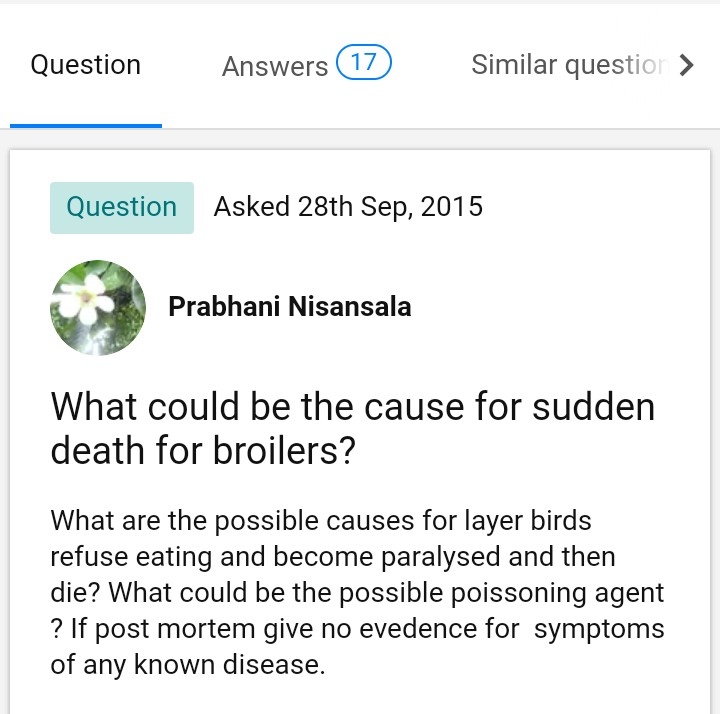
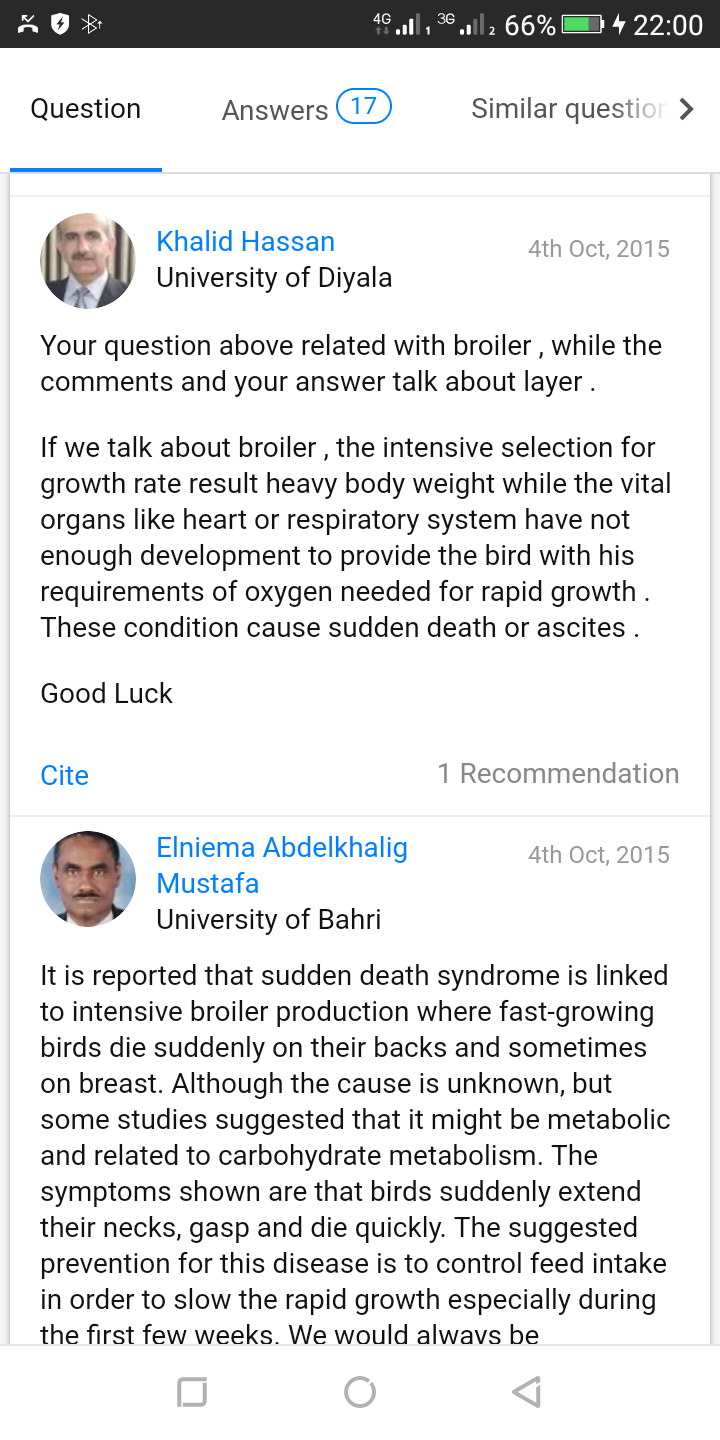
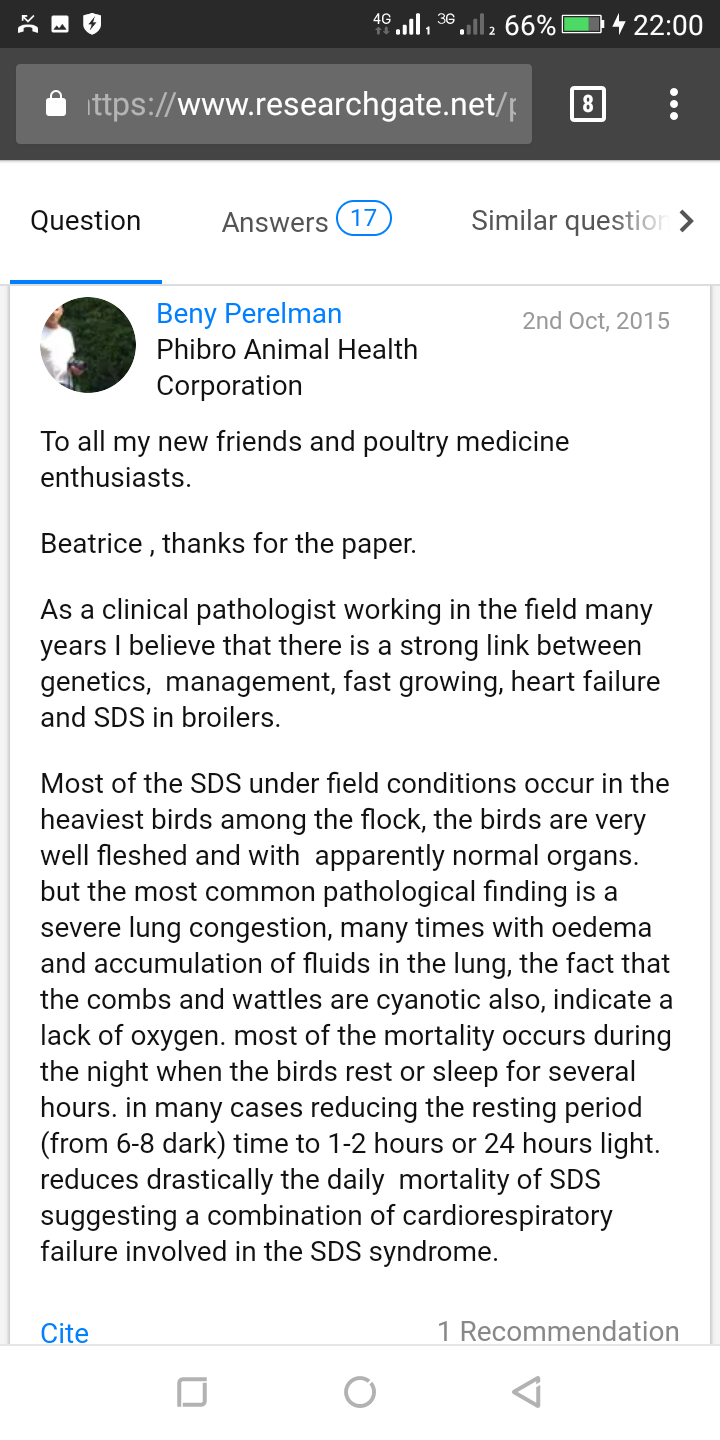
Reference
VICTORIA A. BOWES, R.J. JULIAN, STEVEN LEESON, TANYA STIRTZINGER,
Research Note: Effect of Feed Restriction on Feed Efficiency and Incidence of Sudden Death Syndrome in Broiler Chickens1, Poultry Science, Volume 67, Issue 71988, Pages 1102-1104,ISSN0032-5791,https://doi.org/10.3382/ps.0671102.
Ononiwu JC, Thomson RG, Carlson HC, Julian RJ. Studies on the effect of lighting on "Sudden death syndrome" in broiler chickens. Can Vet J. 1979;20(3):74-77.
In conclusion, you should ensure to note the time of year the weather is extremely hot in your region and the age when birds are predisposed to heat stress and sudden death and, ensure to take the necessary precautions.
If you find this post interest, please comment and share.
Need a website or other IT services? Visit our website!
Share on Twitter Share on Facebook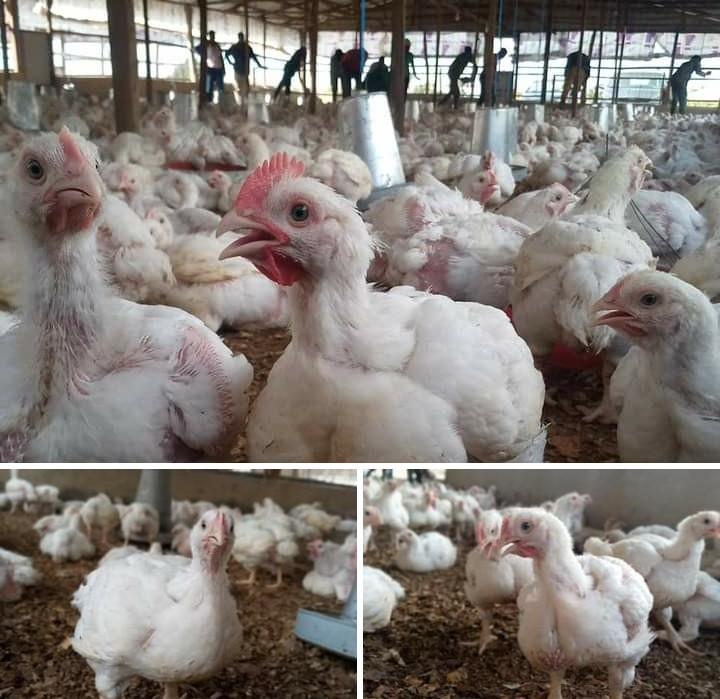
Comments
Renai Ai 4 years, 3 months ago
This is so helpful as I have been experiencing exactly all these problems with my broiler. I am going to apply these solutions to see if their condition will improve. At least I have been relieved.👍
Link | ReplySamuel Ezenwankwo 4 years, 3 months ago
I am glad it's... thanks for reading. Wishing you the best.
Link | ReplyOmolola Olawumi 4 years, 3 months ago
Honestly, this is so educating especially to new farmers like me...I shall definitely take precautions...
Link | ReplyAfenogho Ighoteguono 4 years, 2 months ago
Thanks so much for this. It's really enlightening.
Link | ReplySamuel Ezenwankwo 4 years, 2 months ago
You are welcome Afenogho
Link | ReplyAbdulla fikry 4 years, 1 month ago
im verry happy for your help full advices . thak you very much
Link | ReplySamuel Ezenwankwo 4 years, 1 month ago
I am glad you find it helpful.
Link | ReplyComment awaiting approval 4 years ago
New Comment